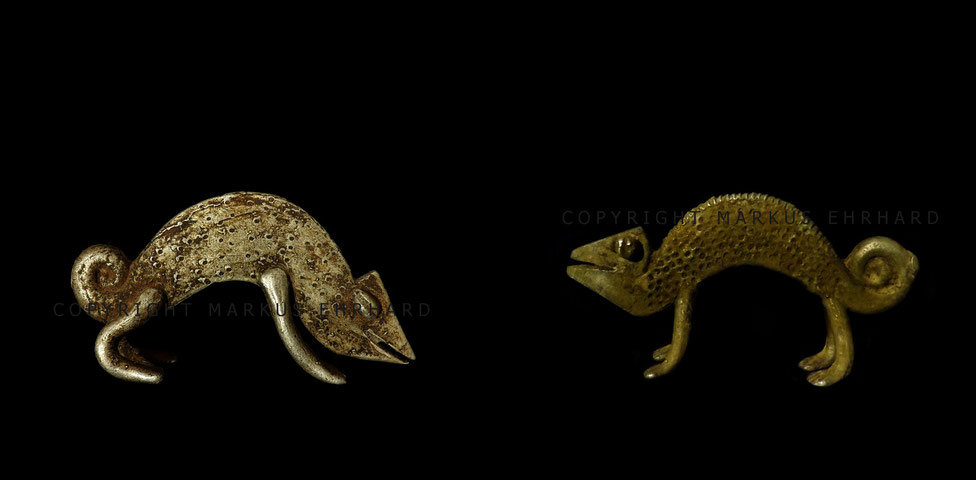
So often it is so difficult to tell, if an object is faked or not. As a collector, I always try to compare and find the differences on similar objects. And when you have two or more of the same genre, you start finding distinctions and variations, you wouln't have discovered on the single piece.
I thought to be on the safe side, I bought the chameleon, on the right, in an established gallery. It was sold to me as an authentic device of a Senufo diviner. The object was small in comparison to a mask or statue, I knew what is was and what it is used for. So I thought not to do someting wrong to buy a nice little piece in aluminium, knowing, that the Senufo use this very light but difficult to cast metal after 1950.
Later on I bought the left chameleon from my cooperator in Korhogo, Souleymane Arachi, also casted in aluminium. He received this object directly from a diviner in Korhogo and it shows typical signs of usage and abrasion.
Shape and making do not show obvious differences. But comparing the traces of usage and the patina, it becomes very obvious what happened. Even small objects get faked by treatments. I can not say for sure, if the right chameleon got manipulated with a colour or chemicals like copper citrate, because of the uniformly greenish brown tone. To me it looks like some kind of clayish dirt. But for sure it is to say, that the surface got treated with something to make it look old.
The authentic chameleon does have abrasion and parts of polish where they are in natural handling. The covering on the faked one is constant without any abrasion.
Sidekick information: The chameleon is, beside the turtle, python and Calao bird, one of the protozoans in Senufo culture. There are many stories about this reptile. One story, told me by Karl-Heinz Krieg, says that the chameleon is a tricky and not trustworthy one, because it can change colour.
Left: Authentic chameleon, Region of Korhogo, Ivory Coast.
6,0 x 11,0 x 2,5 cm, aluminium. Collected by Souleymane Arachi in Korhogo.
Literature:
- Wenn Urform Form bestimmt, Markus Ehrhard, pages 76, 170 - 171
Right: Fake chameleon, Ivory Coast.
7,0 x 13,0 x 3,5 cm, aluminium.
Literature:
- Wenn Urform Form bestimmt, Markus Ehrhard, pages 170 - 171
Copyright content and images by Markus Ehrhard

